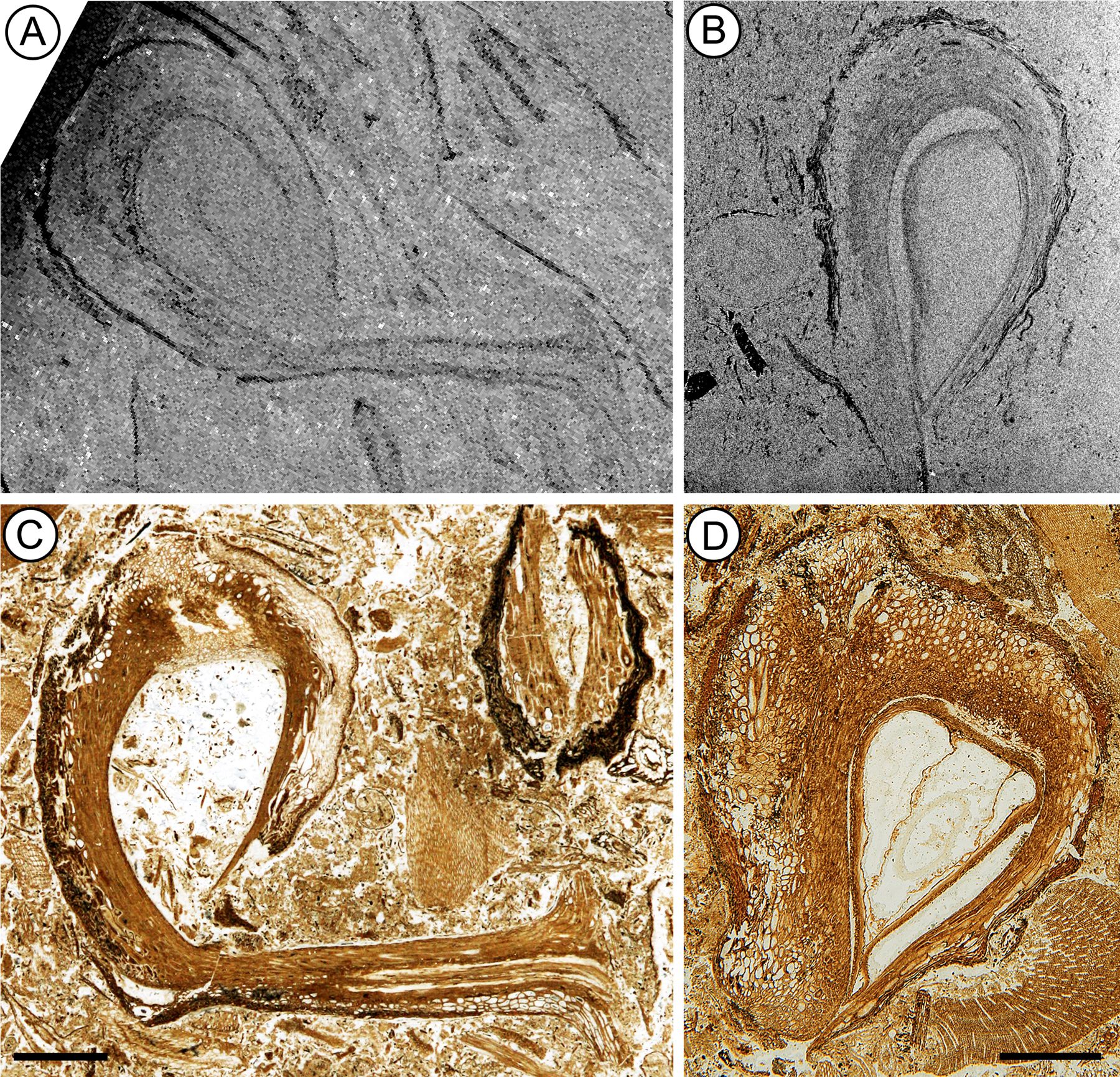Fossil seed-bearing structures preserved in a newly discovered Early Cretaceous silicified peat in Inner Mongolia, China, provide a partial answer to the origin of flowering plants, according to a study led by Prof. SHI Gongle from NIGPAS. The study was published in Nature on May 26, 2021.
The fossils, which date from about 126 million years ago, support an earlier idea that the distinctive outer covering of developing seeds of flowering plants—the so-called second integument—is fundamentally comparable to structures that occur in certain extinct non-angiosperm seed plants from the "Age of Dinosaurs."
The new fossils from China, along with the reexamination of previously described fossils, suggest that the recurved cupules found in several groups of extinct seed plants from the Mesozoic are all fundamentally similar and are likely the precursors of the second integument of flowering plants.
The recurved structure seen in the young seeds of flowering plants is therefore a holdover from an earlier pre-angiosperm phase of evolution. Variation among extinct Mesozoic seed plants in the number of seeds per cupule and other features likely reflect differences relating to pollination, as well as seed output, protection and dispersal.
Reference: Gongle Shi, Fabiany Herrera, Patrick S. Herendeen, Elizabeth G. Clark, Peter R. Crane. (2021) Mesozoic cupules and the origin of the angiosperm second integument. Nature. https://dx.doi.org/10.1038/s41586-021-03598-w.

The silicified material was studied using the traditional technique of cellulose acetate peels (C, D) supplemented by X-ray computed micro-tomography (A, B).
Download:
